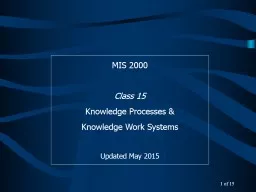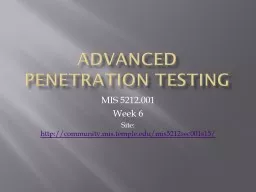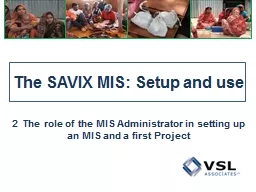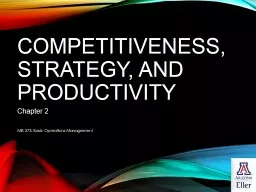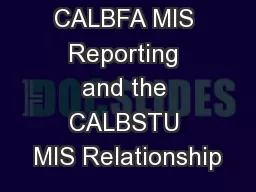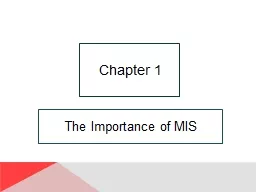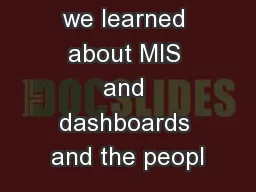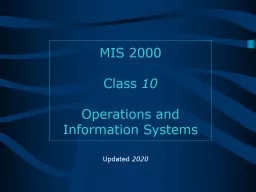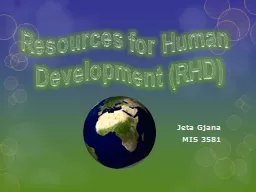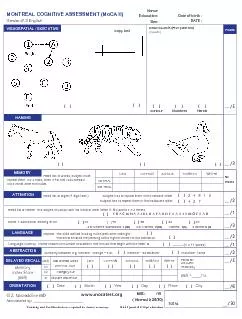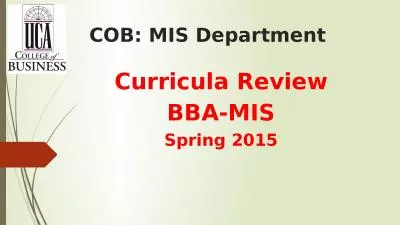PPT-MIS 2000
Author : faustina-dinatale | Published Date : 2016-09-17
Class 14 Knowledge Processes amp Knowledge Work Systems Updated May 2016 1 of 15 Outline Importance of knowledge Knowledge worker Knowledge concept amp types
Presentation Embed Code
Download Presentation
Download Presentation The PPT/PDF document "MIS 2000" is the property of its rightful owner. Permission is granted to download and print the materials on this website for personal, non-commercial use only, and to display it on your personal computer provided you do not modify the materials and that you retain all copyright notices contained in the materials. By downloading content from our website, you accept the terms of this agreement.
MIS 2000: Transcript
Class 14 Knowledge Processes amp Knowledge Work Systems Updated May 2016 1 of 15 Outline Importance of knowledge Knowledge worker Knowledge concept amp types Knowledge m anagement process. evs.2000.hunEuropeanValuesSurvey(2000)-Hungary DescriptionAsampleofEuropeanValuesSurvey(2000)dataset-HungaryFormatAdataframewith1000observationsand34variables.DetailsThisisonlyasampledatasetforpackage MIS 5212.001. Week 11. Site: . http://. community.mis.temple.edu/mis5212sec001s15/. Tonight's Plan. In the news. Presentations. More Wireless Security. Getting wireless card working in Kali. Introduction to Kismet. and . use. . 2. The role of the MIS Administrator in setting up an MIS and a first Project. 2.1. . Credentials. Credentials 1: General. Credentials are the User-names and passwords that give different users access to the system. There . Liidu . poolt. . Venemaa suhtes kehtestatud . sanktsioonid. Rakenduslikud aspektid . Riho Kruuv. Nõunik, poliitikaosakonna julgeolekupoliitika ja relvastuskontrolli büroo. Komisjoni liige esimehe ülesandeis, Strateegilise kauba komisjon. Chapter 2. MIS 373: Basic Operations Management. Learning Objectives. After this lecture, students will be able to . List several ways that business organizations compete. .. Discuss . and compare organization strategy and operations strategy and explain why it is important to link the two. TJ BAUGUS. BUSINESS ANALYST, SENIOR, CAL CC SOLUTION CENTER, ELLUCIAN . FEBRUARY 2014. Ellucian Product Confidentiality. The information in this document is confidential and proprietary to Ellucian and neither the document nor its contents can be disclosed to anyone without a written obligation of confidentiality in place with Ellucian.. Chapter 1. Study Questions. Q1: Why is Introduction to MIS the most important class in the business school?. Q2: What is MIS?. Q3: How can you use the five-component model?. Q4: Why is the difference between information technology and information systems important?. Rolling out an organisation-wide MIS at . WaterAid. Petri Autio. Systems Advisor – Planning, Monitoring, Evaluation and Reporting, WaterAid. MERL Tech: . 20th February 2017. Context. WaterAid. UK has gone from having no MIS at all to a shared, online system covering all country programmes and regions . Class . 10. Operations and Information Systems. Updated . 2017. Outline. Typologies . of Information . Systems. Operation concept. Transaction Processing System (TPS). Management Information System (MIS). In Which You Live. Chapter 1. Overview. Introduction. What is MIS?. IS and Decision Making. IS and Technology. IS and Business. MIS Careers. IS Opportunities and Challenges. Computer Literacy. “To err is human, but to really foul things up requires a computer.”. Türksel. KAYA BENSGHİR. Director of TODAİE eGovernment Center. tbensghir@gmail.com. Prof. Dr. . Türksel. KAYA BENSGHİR. 1. About Concept-MIS. Prof. Dr. Türksel KAYA BENSGHİR. 2. What is MIS?. Development (RHD). Diversified human services - nonprofit. Founded in 1970. Headquarters in Philadelphia, PA. More than 160 programs in 14 states. 4,000 Employees. RHD . To provide caring, effective, efficient and innovative services that help people overcome obstacles and build better lives for themselves, their families and their communities. . POINTS Date of birth : (3 points)[][][][][] / 5 / 3 / 2 / 1 / 3 / / 1 / 2 / 5 / 6 NO POINTS Read list of digits (1 digit / sec.). OKU = 1 37 Multiple choice cueMemoryIndex Score(MIS) WITH NO BBA-MIS. Spring 2015. COB: MIS Department. Example of informal . review:. 2010-2012: three MIS and one CS faculty met with three key Acxiom employees for an assessment of curricula. Examined business needs with respect to our curricula.
Download Document
Here is the link to download the presentation.
"MIS 2000"The content belongs to its owner. You may download and print it for personal use, without modification, and keep all copyright notices. By downloading, you agree to these terms.
Related Documents

